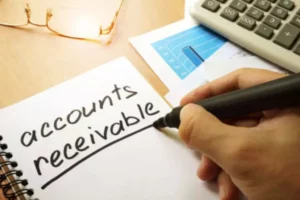Content

But here one must note that an increase in outstanding shares, it results in a dilution of the earnings per share, which will cause the share prices to fall. After all these entries have been made, total stockholders’ equity remains the same, because there has not been a distribution of cash or other assets. Retained https://www.bookstime.com/ earnings is decreased, and contributed capital is increased. Companies that decide to pay dividends usually expect to continue the practice on an ongoing basis. Some companies may reduce or even suspend their dividends during periods when profits are low, as was the case during the Great Recession of 2008 and 2009.
How do you record stock dividends in journal entry?
The journal entry to record the declaration of the cash dividends involves a decrease (debit) to Retained Earnings (a shareholders' equity account) and an increase (credit) to Dividends Payable (a liability account):
Clearly, a stock dividend conserves cash and thus allows the firm to use its cash for growth and expansion. That is, the current holders of stock receive additional shares of stock in proportion to their current holdings. However, companies can declare dividends whenever they want https://www.bookstime.com/articles/cash-dividends-and-stock-dividends and are not limited in the number of annual declarations. It is important to note that dividends are not considered expenses, and they are not reported on the income statement. They are a distribution of the net income of a company and are not a cost of business operations.
Cash Dividends vs. Stock Dividends
Stock dividends occur when companies issue new shares and distribute them to existing shareholders. When this happens, the company’s share price drops to reflect the impact of the dilution of the existing shares outstanding. Shareholders can either keep the new shares or sell them to create their own cash dividend. Many corporations issue stock dividends instead of, or in addition to, cash dividends. A Stock dividend is a distribution to current shareholders on a proportional basis of the corporation’s own stock.
However, how many shares will be allotted to each shareholder will depend on the shareholder’s holding in the company. The frequency and amount of dividends paid are determined by the company and normally follow regular patterns, such as quarterly or annually. The most important thing to note by comparing the stockholders’ equity section in both balance sheets is that the total is $3 million In both cases. The only difference is the total of the various accounts within stockholders’ equity.
Critical Facts You Need to Know About Preferred Stocks
“This is especially true if they were paying a cash dividend and switched to a stock dividend.” When a company declares a dividend, shareholders who own stock as of a date specified in the announcement are entitled to the payment. For example, if a company you owned 1,000 shares declared a dividend of 50 cents per share, you would be paid $500. If you are looking for income from your stock on a regular basis, cash dividends are among the best sources.
As tech companies take over the market again, don’t forget these … – Morningstar
As tech companies take over the market again, don’t forget these ….
Posted: Tue, 06 Jun 2023 14:29:00 GMT [source]
When a company issues a share dividend, it distributes additional shares (ordinary shares) to existing shareholders. Share dividends are declared by a company’s board of directors and may be stated in dollar or percentage terms. Shareholders do not have to pay income taxes on share dividends when they receive them; instead, they are taxed when the shareholder sells them in the future. A share dividend distributes shares so that after the distribution, all shareholders have the exact same percentage of ownership that they held prior to the dividend. Like cash dividends, stock dividends tend to affect a company’s stock price.
4 The Issuance of Cash and Stock Dividends
Not surprisingly, the investor makes no journal entry in accounting for the receipt of a stock dividend. No change has taken place except for the number of shares being held. Other businesses stress rapid growth and rarely, if ever, pay a cash dividend.

From the Latin “dividendum” meaning a “thing to be divided,” a dividend is a distribution of profits made by a corporation to its shareholders. Investing is the process of laying out money today so that money will work for you, not only now but down the line for you and your loved ones in the future. Growth in the firm should result in future changes to your lifestyle, either in the form of nicer things or financial freedom. The real choice at hand is whether or not you will choose to reinvest your cash dividend or sell your stock payment for cash. Here are some factors to think about if you’re unsure which choice is right for you.
Financial Accounting
Finance Strategists is a leading financial literacy non-profit organization priding itself on providing accurate and reliable financial information to millions of readers each year. Helpful articles on different dividend investing options and how to best save, invest, and spend your hard-earned money. Our mission is to empower readers with the most factual and reliable financial information possible to help them make informed decisions for their individual needs. We follow strict ethical journalism practices, which includes presenting unbiased information and citing reliable, attributed resources. At Finance Strategists, we partner with financial experts to ensure the accuracy of our financial content. Cam Merritt is a writer and editor specializing in business, personal finance and home design.
- For example, cash dividend payments usually drop after a stock dividend but not always in proportion to the change in the number of outstanding shares.
- You must be a shareholder on or before the next ex-dividend date to receive the upcoming dividend.
- Stock Split is a corporate move, in which the face value of the company’s existing shares is split or divided into a certain ratio.
- Cash dividends involve converting a portion of equity into cash on behalf of shareholders.
For example, if a company issues a cash dividend equal to 5% of the stock price, shareholders will see a resulting loss of 5% in the price of their shares. There is no effect on the par value per share, but with the issue of additional shares, the total number of outstanding shares increases. This is because it results in the transfer of the part of retained earnings to paid-up capital. It actually transfers the company’s general reserves into share capital.
Stock dividend pros and cons
When investors receive a stock dividend, the cost per share of their original shares is reduced accordingly. Explore examples of dividend investing, what a dividend payout is, and what common stock and preferred stock are. A company that does not have enough cash may choose to pay a stock dividend in lieu of a cash dividend. In other words, a cash dividend allows a company to maintain its current cash position. No journal entry is recorded by the corporation on either the date of record or the ex-dividend date because they do not relate to any event or transaction.
However, cash dividends that are deemed “qualified” by IRS definitions are eligible for lower long-term tax rates. Cash dividends are payments companies make to their shareholders, usually on the strength of earnings. Dividends represent an opportunity for companies to share the benefit of business profits. The key takeaway from our example is that a stock dividend does not affect the total value of the shares that each shareholder holds in the company. As the number of shares increases, the price per share decreases accordingly because the market capitalization must remain the same.
Companies may decide to distribute this type of dividend to shareholders of record if the company’s availability of liquid cash is in short supply. While some stock dividends may require shareholders to hold their new shares for a set period of time, others come with cash options and can be converted into cash. In the case of a stock dividend, regardless of the percentage of distribution, the distribution of the dividend takes place through the transfer of such amount from free reserves to paid-up share capital.
However, the corporation does make a journal entry to record the issuance of a stock dividend although it creates no impact on either assets or liabilities. But since cash dividends transfer capital from a company to shareholders, they reduce the amount of money the company has on hand. If the hypothetical company in the example above had 10 million outstanding shares, its market capitalization would fall by $2.5 million as result of the cash dividends it paid to shareholders. Cash dividends also affect the company’s stock price by approximately the same value of the distribution. If the company in the example above issued a $0.25 dividend for every share owned by investors, its share price would likely fall by the same amount. Dividends are the cash or stock distributions that some companies and mutual funds pay to shareholders.
Liquidating Dividend
The investors can merely hope that additional cash dividends will be received. A stock dividend is the issuance by a company of its common stock to its common shareholders without any consideration. If the company issues less than 25 percent of the total number of previously outstanding shares, then treat the transaction as a stock dividend.
